Validation of TaqMan-Based Assays for Specific Detection and Differentiation of Wild-Type and Neethling Vaccine Strains of LSDV
Abstract
1. Introduction
2. Materials and Methods
2.1. Design of KV-2 and KV-VAC Assays
2.2. Validation Study
2.2.1. DNA Extraction
2.2.2. Samples for Analytical Sensitivity (Ase), Specificity (Asp), Efficiency, and Repeatability
2.2.3. Samples for Diagnostic Sensitivity (Dse) and Specificity (Dsp)
2.2.4. Samples for Comparative Analysis
2.3. Real-Time PCR
2.3.1. KV-2 and KV-VAC Assays
2.3.2. Additional Real-Time PCRs
3. Results
3.1. Results of Validation Study in VSI Kraljevo
3.1.1. Efficiency of the Wild-Type KV-2 Strain Assay
3.1.2. Efficiency of the Vaccine KV-VAC Strain Assay
3.1.3. Analytical Sensitivity of the Assays
3.1.4. Determination of Cut-off of Assays
3.1.5. Determination of Repeatability and Reproducibility of the Assays
3.1.6. Diagnostic Sensitivity and Diagnostic Specificity
Diagnostic Sensitivity
3.1.7. Analytical Sensitivity and Exclusivity
3.1.8. Statistical Analysis of VSI Kraljevo Validation Results
3.2. Results of Validation Study in Sciensano
3.2.1. Determination of Repeatability and Reproducibility of the Assays
3.2.2. Diagnostic Sensitivity and Diagnostic Specificity
Diagnostic Sensitivity
Diagnostic Specificity
3.2.3. Analytical Sensitivity and Exclusivity
Exclusivity of the Assays
3.2.4. Statistical Analysis of Sciensano Validation Results
4. Discussion
Supplementary Materials
Author Contributions
Funding
Institutional Review Board Statement
Informed Consent Statement
Data Availability Statement
Acknowledgments
Conflicts of Interest
References
- OIE. Terrestrial Manual 2017, Chapter 2.4.13. Lumpy Skin Disease. Available online: https://www.oie.int/fileadmin/Home/eng/Health_standards/tahm/2.04.13_LSD.pdf (accessed on 1 March 2021).
- Tulman, E.R.; Afonso, C.L.; Lu, Z.; Zsak, L.; Kutish, G.F.; Rock, D.L. Genome of Lumpy Skin Disease Virus. J. Virol. 2001, 75, 7122–7130. [Google Scholar] [CrossRef] [PubMed]
- OIE. World Animal Health Information Database (WAHID) Interface. Available online: http://www.oie.int/wahis/public.php?page=home (accessed on 1 March 2021).
- Salnikov, N.; Usadov, T.; Kolcov, A.; Zhivoderov, S.; Morgunov, Y.; Gerasimov, V.; Gogin, A.; Titov, I.; Yurkov, S.; Malogolovkin, A.; et al. Identification and characterization of lumpy skin disease virus isolated from cattle in the Republic of North Ossetia-Alania in 2015. Transbound. Emerg. Dis. 2018, 65, 916–920. [Google Scholar] [CrossRef]
- Manić, M.; Stojiljković, M.; Petrović, M.; Nišavić, J.; Bacić, D.; Petrović, T.; Vidanović, D.; Obrenović, S. Epizootic features and control measures for lumpy skin disease in south-east Serbia in 2016. Transbound. Emerg. Dis. 2019, 66, 2087–2099. [Google Scholar] [CrossRef]
- Tageldin, M.H.; Wallace, D.B.; Gerdes, G.H.; Putterill, J.F.; Greyling, R.R.; Phosiwa, M.N.; Al Busaidy, R.M.; Al Ismaaily, S.I. Lumpy skin disease of cattle: An emerging problem in the Sultanate of Oman. Trop. Anim. Health Prod. 2014, 46, 241–246. [Google Scholar] [CrossRef] [PubMed]
- Davies, F.G. Lumpy skin disease, an African capripox virus disease of cattle. Br. Vet. J. 1991, 147, 489–503. [Google Scholar] [CrossRef]
- Gari, G.; Bonnet, P.; Roger, F.; Waret-Szkuta, A. Epidemiological aspects and financial impact of lumpy skin disease in Ethiopia. Prev. Vet. Med. 2011, 102, 274–283. [Google Scholar] [CrossRef] [PubMed]
- Tuppurainen, E.S.M.; Oura, C.A.L. Review: Lumpy Skin Disease: An Emerging Threat to Europe, the Middle East and Asia. Transbound. Emerg. Dis. 2012, 59, 40–48. [Google Scholar] [CrossRef] [PubMed]
- Babiuk, S.; Bowden, T.R.; Parkyn, G.; Dalman, B.; Manning, L.; Neufeld, J.; Embury-Hyatt, C.; Copps, J.; Boyle, D.B. Quantification of Lumpy Skin Disease Virus Following Experimental Infection in Cattle. Transbound. Emerg. Dis. 2008, 55, 299–307. [Google Scholar] [CrossRef]
- Vasković, N.; Debeljak, Z.; Vidanovic, D.; Šekler, M.; Matović, K.; Aničić, M.; Marinković, D. Morphological Characteristics of Skin Lesions in Cattle Naturally Infected with Lumpy Skin Disease Virus in Serbia. Acta Vet. 2019, 69, 369–378. [Google Scholar] [CrossRef]
- Agianniotaki, E.I.; Tasioudi, K.E.; Chaintoutis, S.; Iliadou, P.; Mangana-Vougiouka, O.; Kirtzalidou, A.; Alexandropoulos, T.; Sachpatzidis, A.; Plevraki, E.; Dovas, C.I.; et al. Lumpy skin disease outbreaks in Greece during 2015–16, implementation of emergency immunization and genetic differentiation between field isolates and vaccine virus strains. Vet. Microbiol. 2017, 201, 78–84. [Google Scholar] [CrossRef]
- Menasherow, S.; Rubinstein-Giuni, M.; Kovtunenko, A.; Eyngor, Y.; Fridgut, O.; Rotenberg, D.; Khinich, Y.; Stram, Y. Development of an assay to differentiate between virulent and vaccine strains of lumpy skin disease virus (LSDV). J. Virol. Methods 2014, 199, 95–101. [Google Scholar] [CrossRef] [PubMed]
- Vidanovic, D.; Šekler, M.; Petrović, T.; Debeljak, Z.; Vasković, N.; Matović, K.; Hoffmann, B. Real-Time PCR Assays for the Specific Detection of Field Balkan Strains of Lumpy Skin Disease Virus. Acta Vet. 2016, 66, 444–454. [Google Scholar] [CrossRef]
- Agianniotaki, E.I.; Chaintoutis, S.; Haegeman, A.; Tasioudi, K.E.; De Leeuw, I.; Katsoulos, P.-D.; Sachpatzidis, A.; De Clercq, K.; Alexandropoulos, T.; Polizopoulou, Z.S.; et al. Development and validation of a TaqMan probe-based real-time PCR method for the differentiation of wild type lumpy skin disease virus from vaccine virus strains. J. Virol. Methods 2017, 249, 48–57. [Google Scholar] [CrossRef]
- Sprygin, A.; Pestova, Y.; Prutnikov, P.; Kononov, A. Detection of vaccine-like lumpy skin disease virus in cattle and Musca domestica L. flies in an outbreak of lumpy skin disease in Russia in 2017. Transbound. Emerg. Dis. 2018, 65, 1137–1144. [Google Scholar] [CrossRef]
- Pestova, Y.; Artyukhova, E.; Kostrova, E.; Shumoliva, I.; Kononov, A.; Sprygin, A. Real Time PCR for the Detection of Field Isolates of Lumpy Skin Disease Virus in Clinical Samples from Cattle. Sel’skokhozyaistvennaya Biol. 2018, 53, 422–429. [Google Scholar] [CrossRef]
- Haegeman, A.; De Vleeschauwer, A.; De Leeuw, I.; Vidanović, D.; Šekler, M.; Petrović, T.; Demarez, C.; Lefebvre, D.; De Clercq, K. Overview of diagnostic tools for Capripox virus infections. Prev. Vet. Med. 2020, 181, 104704. [Google Scholar] [CrossRef] [PubMed]
- Bowden, T.R.; Babiuk, S.L.; Parkyn, G.R.; Copps, J.S.; Boyle, D.B. Capripoxvirus tissue tropism and shedding: A quantitative study in experimentally infected sheep and goats. Virology 2008, 371, 380–393. [Google Scholar] [CrossRef]
- Balinsky, C.A.; Delhon, G.; Smoliga, G.; Prarat, M.; French, R.A.; Geary, S.J.; Rock, D.L.; Rodriguez, L.L. Rapid Preclinical Detection of Sheeppox Virus by a Real-Time PCR Assay. J. Clin. Microbiol. 2007, 46, 438–442. [Google Scholar] [CrossRef]
- Haegeman, A.; Zro, K.; Vandenbussche, F.; Demeestere, L.; Van Campe, W.; Ennaji, M.M.; De Clercq, K. Development and validation of three Capripoxvirus real-time PCRs for parallel testing. J. Virol. Methods 2013, 193, 446–451. [Google Scholar] [CrossRef]
- Alexander, S.; Olga, B.; Svetlana, K.; Valeriy, Z.; Yana, P.; Pavel, P.; Aleksandr, K. A real-time PCR screening assay for the universal detection of lumpy skin disease virus DNA. BMC Res. Notes 2019, 12, 371. [Google Scholar] [CrossRef]
- Toplak, I.; Petrović, T.; Vidanovic, D.; Lazić, S.; Šekler, M.; Manić, M.; Petrović, M.; Kuhar, U. Complete Genome Sequence of Lumpy Skin Disease Virus Isolate SERBIA/Bujanovac/2016, Detected during an Outbreak in the Balkan Area. Genome Announc. 2017, 5, e00882-17. [Google Scholar] [CrossRef] [PubMed]
- Tuppurainen, E.S.M.; Antoniou, S.-E.; Tsiamadis, E.; Topkaridou, M.; Labus, T.; Debeljak, Z.; Plavšić, B.; Miteva, A.; Alexandrov, T.; Pite, L.; et al. Field observations and experiences gained from the implementation of control measures against lumpy skin disease in South-East Europe between 2015 and 2017. Prev. Vet. Med. 2020, 181, 104600. [Google Scholar] [CrossRef] [PubMed]
- Tuppurainen, E.S.; Pearson, C.R.; Bachanek-Bankowska, K.; Knowles, N.J.; Amareen, S.; Frost, L.; Henstock, M.R.; Lamien, C.E.; Diallo, A.; Mertens, P.P. Characterization of sheep pox virus vaccine for cattle against lumpy skin disease virus. Antivir. Res. 2014, 109, 1–6. [Google Scholar] [CrossRef] [PubMed]
- Byadovskaya, O.; Pestova, Y.; Kononov, A.; Shumilova, I.; Kononova, S.; Nesterov, A.; Babiuk, S.; Sprygin, A. Performance of the currently available DIVA real-time PCR assays in classical and recombinant lumpy skin disease viruses. Transbound. Emerg. Dis. 2020. [Google Scholar] [CrossRef]
- Badhy, S.C.; Chowdhury, M.G.A.; Settypalli, T.B.K.; Cattoli, G.; Lamien, C.E.; Fakir, M.A.U.; Akter, S.; Osmani, M.G.; Talukdar, F.; Begum, N.; et al. Molecular characterization of lumpy skin disease virus (LSDV) emerged in Bangladesh reveals unique genetic features compared to contemporary field strains. BMC Vet. Res. 2021, 17, 61. [Google Scholar] [CrossRef]
- Sprygin, A.; Van Schalkwyk, A.; Shumilova, I.; Nesterov, A.; Kononova, S.; Prutnikov, P.; Byadovskaya, O.; Kononov, A. Full-length genome characterization of a novel recombinant vaccine-like lumpy skin disease virus strain detected during the climatic winter in Russia, 2019. Arch. Virol. 2020, 165, 2675–2677. [Google Scholar] [CrossRef] [PubMed]
- Lu, G.; Xie, J.; Luo, J.; Shao, R.; Jia, K.; Li, S. Lumpy skin disease outbreaks in China, since 3 August 2019. Transbound. Emerg. Dis. 2021, 68, 216–219. [Google Scholar] [CrossRef]
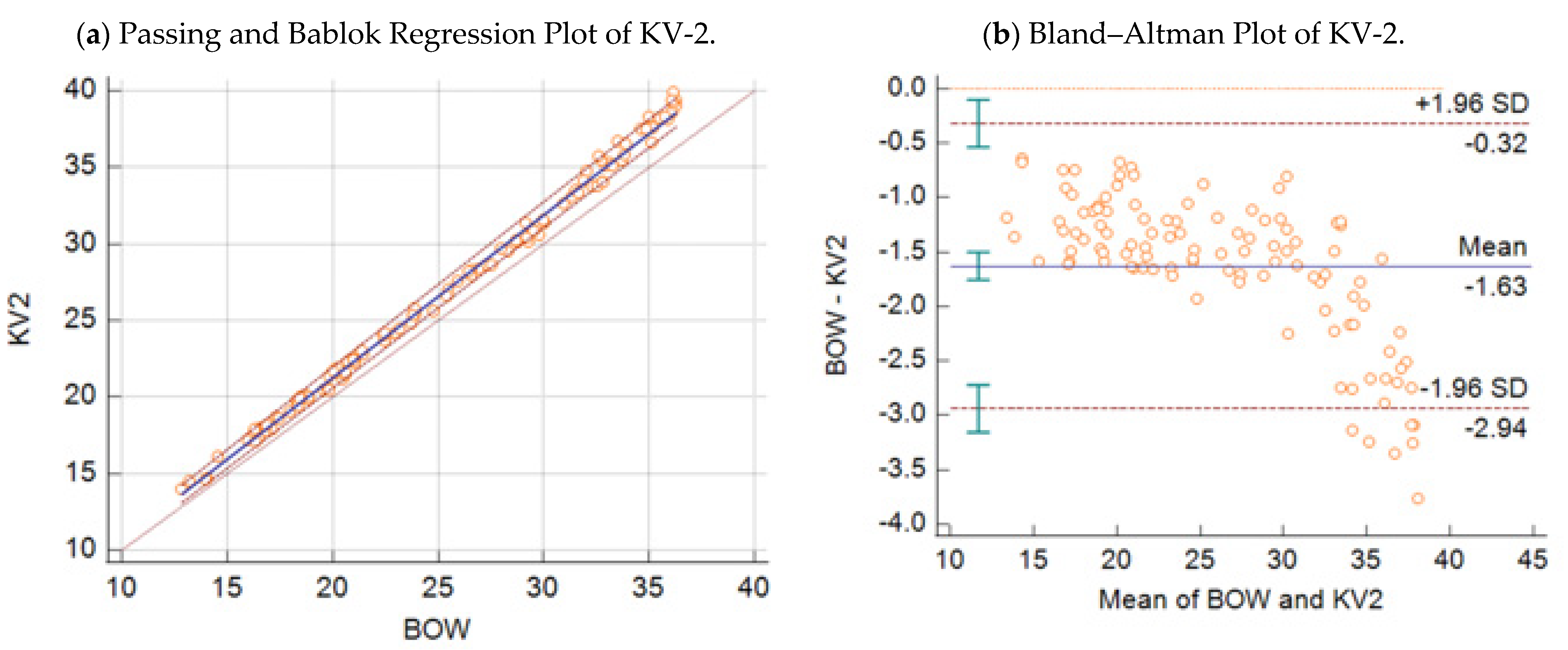
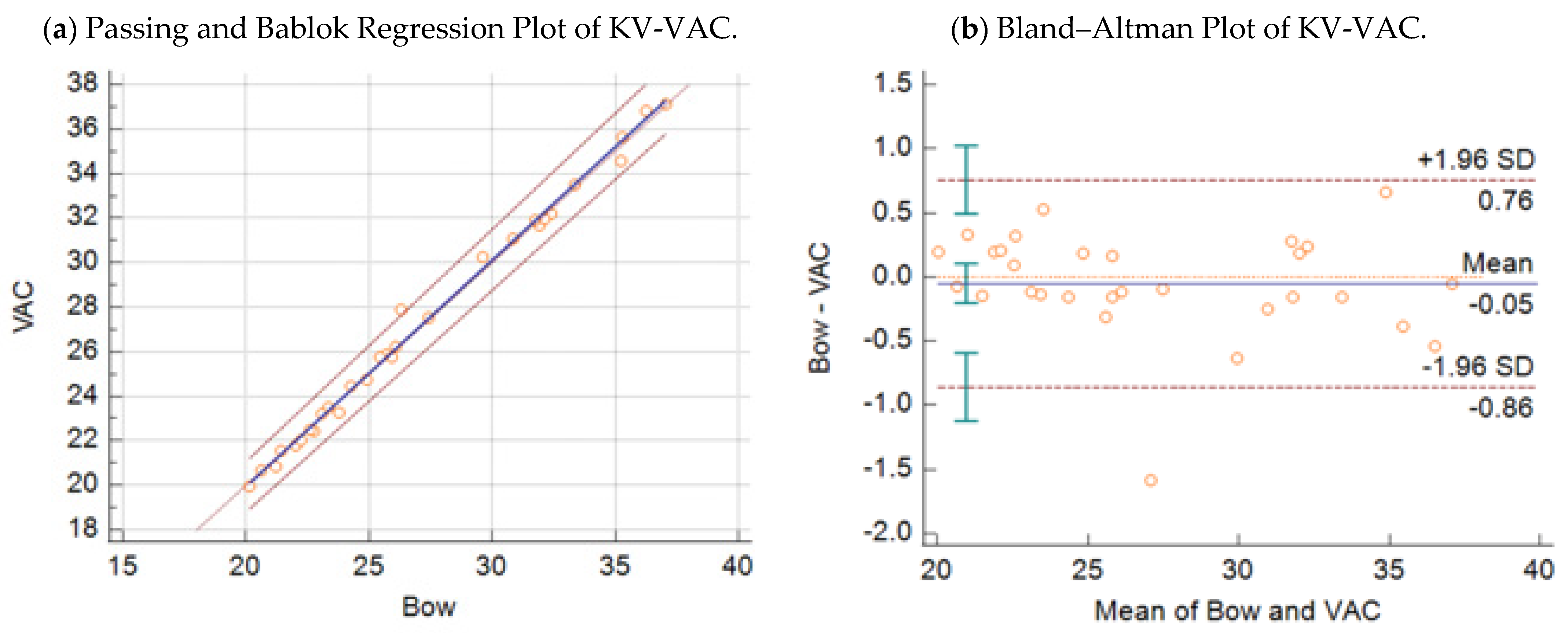
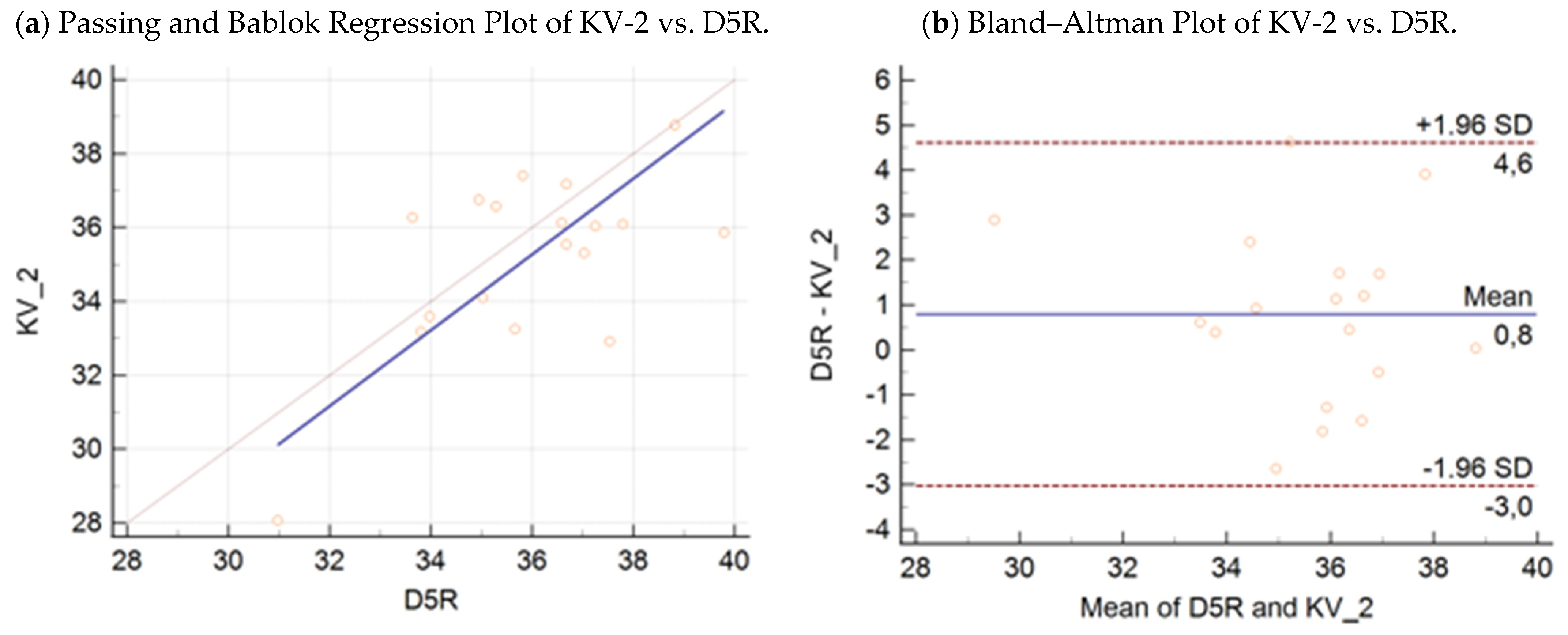
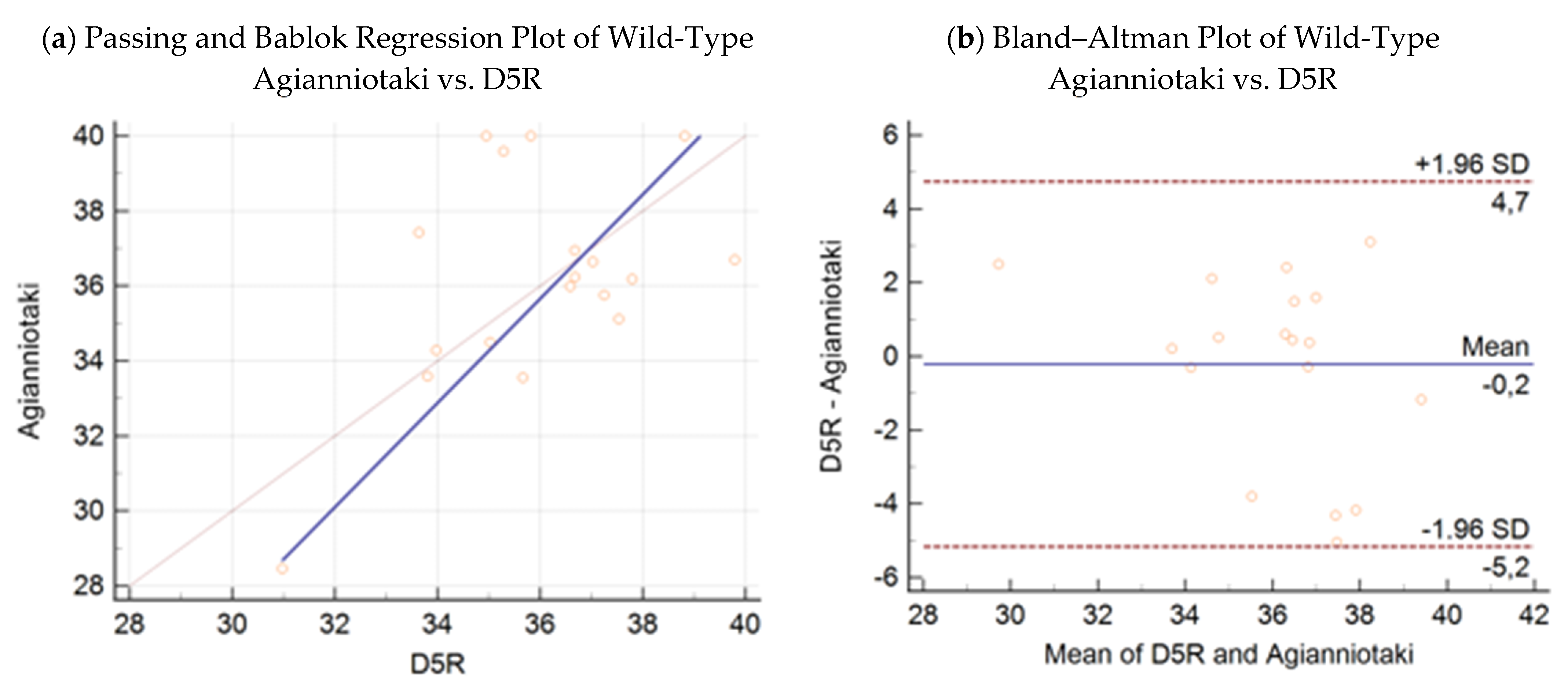
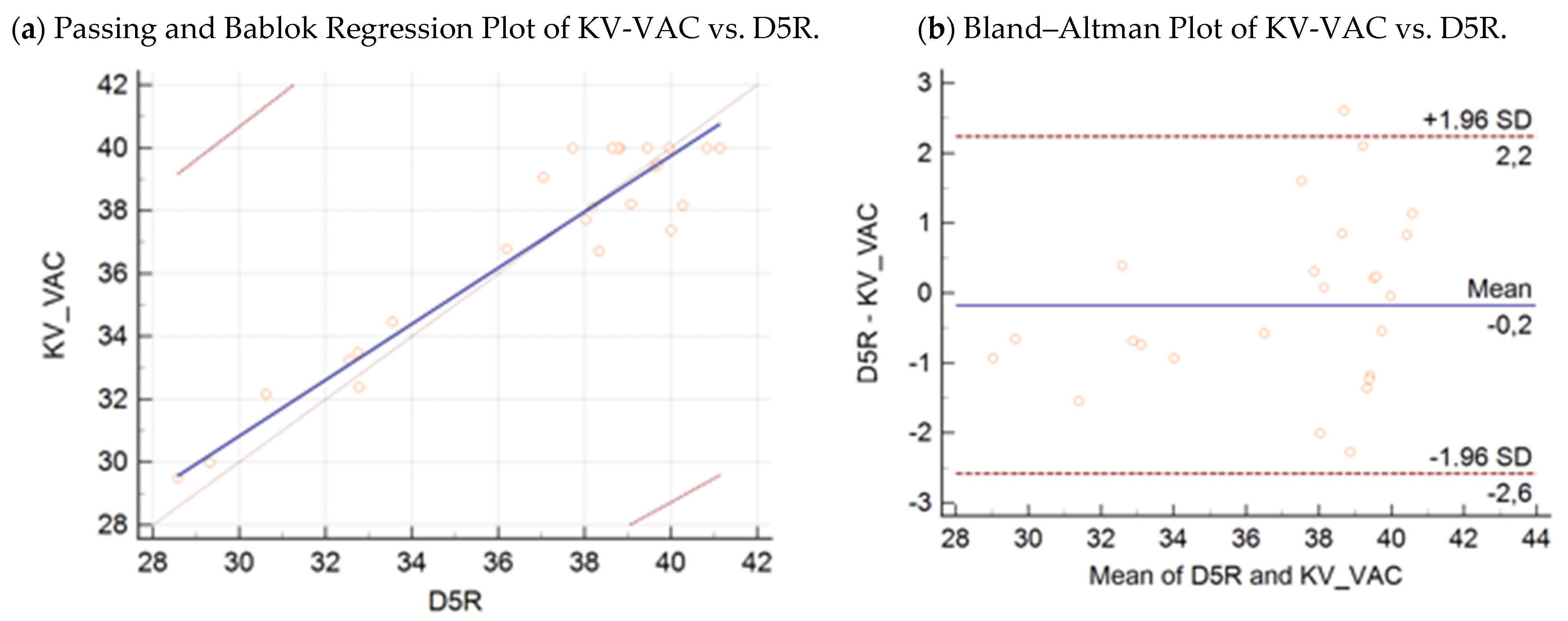

| Oligo | Sequence (5′–3′) |
|---|---|
| KV2_Fmod | TGGGAYGATAACAACGTTTATG |
| KV2_Rmod | ACATTGTCATCYGGTAATGTA |
| LSD_KV2_Pro_field | VIC-TTACCACCTAATGATAGTGTTTATGATTTACC-BHQ1 |
| Oligo | Sequence (5′–3′) |
|---|---|
| LSDV_vacc_5670f | TGCTTGTTTCCATTCTCCACT |
| LSDV_vacc_5829r | AAAAATGGGCGCAGTAGTATTT |
| LSDV_vacc_5726_Pro | FAM-CGCTGACATCGTTAGTCCACTCG-BHQ1 |
| Samples Collected during LSD Outbreak in 2016 | |
| 1. Skin biopsy | 94 |
| 2. Blood | 31 |
| 3. Nasal swabs | 17 |
| 4. Milk | 2 |
| 5. Flies | 7 |
| 6. Environmental swabs | 12 |
| Samples Collected during Prior Outbreak (2014) and after the Outbreak (2017) | |
| 7. DNA of internal organs originating from cattle taken in 2014 | 40 |
| 8. Blood of animals vaccinated in 2017 | 40 |
| Total | 243 |
| Run 1 | Run 2 | Run 3 | |
|---|---|---|---|
| Mean | 35.73125 | 35.17375 | 35.43875 |
| SDEV | 0.410311 | 0.292913 | 0.285329 |
| CV | 1.148326 | 0.832761 | 0.805132 |
| Inter-run mean | 35.44792 | ||
| Inter-run SDEV | 0.278863 | ||
| Inter-run CV | 0.79 |
| Run 1 | Run 2 | Run 3 | |
|---|---|---|---|
| Mean | 35.55375 | 35.285 | 35.19625 |
| SDEV | 0.227843 | 0.314234 | 0.352134 |
| CV | 0.640841 | 0.890559 | 1.000487 |
| Inter-run mean | 35.345 | ||
| Inter-run SDEV | 0.167818 | ||
| Inter-run CV | 0.47 |
| Diagnostic Sensitivity and Diagnostic Specificity for KV-2 Assay vs. Bowden Assay | Diagnostic Sensitivity and Diagnostic Specificity for KV-VAC Assay vs. Bowden Assay | |||
|---|---|---|---|---|
| Statistic | Value | 95% CI | Value | 95% CI |
| Sensitivity | 97.46% | 92.75–99.47% | 100.00% | 89.11–100.00% |
| Specificity | 100.00% | 92.60–100.00% | 100.00% | 97.22–100.00% |
| Positive likelihood ratio | ||||
| Negative likelihood ratio | 0.03 | 0.01–0.08 | 0 | |
| Disease prevalence | 95.00% | 95.00% | ||
| Positive predictive value | 100.00% | 100.00% | ||
| Negative predictive value | 67.43% | 40.38–86.35% | 100.00% | |
| Accuracy | 97.58% | 93.94–99.34% | 100.00% | 97.76–100.00% |
| Samples | Number of Samples | Bowden Positive | Bowden Negative | KV-2 Positive | KV-2 Negative | KV-VAC Positive | KV-VAC Negative |
|---|---|---|---|---|---|---|---|
| DNA from true negative cattle (samples from 2014) | 40 | 0 | 40 | 0 | 40 | 0 | 40 |
| Blood from vaccinated cattle 2017 | 40 | 12 | 28 | 0 | 40 | 12 | 28 |
| KV-2 (WT) | Day 1 | Day 2 | Day 3 | Day 4 | Day 5 |
|---|---|---|---|---|---|
| Mean | 35.5 | 34.95 | 34.68 | 34.45 | 34.43 |
| Std. Deviation | 0.2449 | 1.237 | 0.6397 | 0.4509 | 0.5737 |
| Coefficient of variation | 0.69% | 3.54% | 1.85% | 1.31% | 1.67% |
| Inter-run mean | 34.8 | ||||
| Inter-run SD | 0.7525 | ||||
| Inter-run CV | 2.16% |
| KV-VAC (VAC) | Day 1 | Day 2 | Day 3 | Day 4 | Day 5 |
|---|---|---|---|---|---|
| Mean | 32.5 | 31.1 | 32.05 | 31.7 | 32.13 |
| Std. Deviation | 0.383 | 0.469 | 0.5686 | 0.2708 | 0.5315 |
| Coefficient of variation | 1.18% | 1.51% | 1.77% | 0.85% | 1.65% |
| Inter-run mean | 31.9 | ||||
| Inter-run SD | 0.632 | ||||
| Inter-run CV | 1.98% |
| Diagnostic Sensitivity and Diagnostic Specificity for KV-2 Assay vs. D5R Assay | Diagnostic Sensitivity and Diagnostic Specificity for KV-VAC Assay vs. D5R Assay | |||
|---|---|---|---|---|
| Statistic | Value | 95% CI | Value | 95% CI |
| Sensitivity | 100.00% | 81.47–100.00% | 85.71% | 69.74–95.19% |
| Specificity | 100.00% | 88.43–100.00% | 100.00% | 81.47–100.00% |
| Positive likelihood ratio | ||||
| Negative likelihood ratio | 0.00 | 0.14 | 0.06–0.32 | |
| Disease prevalence | 95.00% | 95.00% | ||
| Positive predictive value | 100.00% | 100.00% | ||
| Negative predictive value | 100.00% | 26.92% | 14.06–45.34% | |
| Accuracy | 100.00% | 92.60–100.00% | 86.43% | 74.22–94.28% |
| Diagnostic Sensitivity and Diagnostic Specificity for Wild-Type Agianniotaki Assay vs. D5R Assay | Diagnostic Sensitivity and Diagnostic Specificity for Agianniotaki Vaccine Assay vs. D5R Assay | |||
|---|---|---|---|---|
| Statistic | Value | 95% CI | Value | 95% CI |
| Sensitivity | 100.00% | 81.47–100.00% | 75.00% | 58.80–87.31% |
| Specificity | 100.00% | 88.43–100.00% | 100.00% | 81.47–100.00% |
| Positive likelihood ratio | ||||
| Negative likelihood ratio | 0.00 | 0.25 | 0.15–0.43 | |
| Disease prevalence | 95.00% | 95.00% | ||
| Positive predictive value | 100.00% | 100.00% | ||
| Negative predictive value | 100.00% | 17.39% | 10.96–26.48% | |
| Accuracy | 100.00% | 92.60–100.00% | 76.25% | 63.26–86.44% |
Publisher’s Note: MDPI stays neutral with regard to jurisdictional claims in published maps and institutional affiliations. |
© 2021 by the authors. Licensee MDPI, Basel, Switzerland. This article is an open access article distributed under the terms and conditions of the Creative Commons Attribution (CC BY) license (https://creativecommons.org/licenses/by/4.0/).
Share and Cite
Vidanović, D.; Tešović, B.; Šekler, M.; Debeljak, Z.; Vasković, N.; Matović, K.; Koltsov, A.; Krstevski, K.; Petrović, T.; De Leeuw, I.; et al. Validation of TaqMan-Based Assays for Specific Detection and Differentiation of Wild-Type and Neethling Vaccine Strains of LSDV. Microorganisms 2021, 9, 1234. https://doi.org/10.3390/microorganisms9061234
Vidanović D, Tešović B, Šekler M, Debeljak Z, Vasković N, Matović K, Koltsov A, Krstevski K, Petrović T, De Leeuw I, et al. Validation of TaqMan-Based Assays for Specific Detection and Differentiation of Wild-Type and Neethling Vaccine Strains of LSDV. Microorganisms. 2021; 9(6):1234. https://doi.org/10.3390/microorganisms9061234
Chicago/Turabian StyleVidanović, Dejan, Bojana Tešović, Milanko Šekler, Zoran Debeljak, Nikola Vasković, Kazimir Matović, Andrey Koltsov, Kiril Krstevski, Tamaš Petrović, Ilse De Leeuw, and et al. 2021. "Validation of TaqMan-Based Assays for Specific Detection and Differentiation of Wild-Type and Neethling Vaccine Strains of LSDV" Microorganisms 9, no. 6: 1234. https://doi.org/10.3390/microorganisms9061234
APA StyleVidanović, D., Tešović, B., Šekler, M., Debeljak, Z., Vasković, N., Matović, K., Koltsov, A., Krstevski, K., Petrović, T., De Leeuw, I., & Haegeman, A. (2021). Validation of TaqMan-Based Assays for Specific Detection and Differentiation of Wild-Type and Neethling Vaccine Strains of LSDV. Microorganisms, 9(6), 1234. https://doi.org/10.3390/microorganisms9061234






